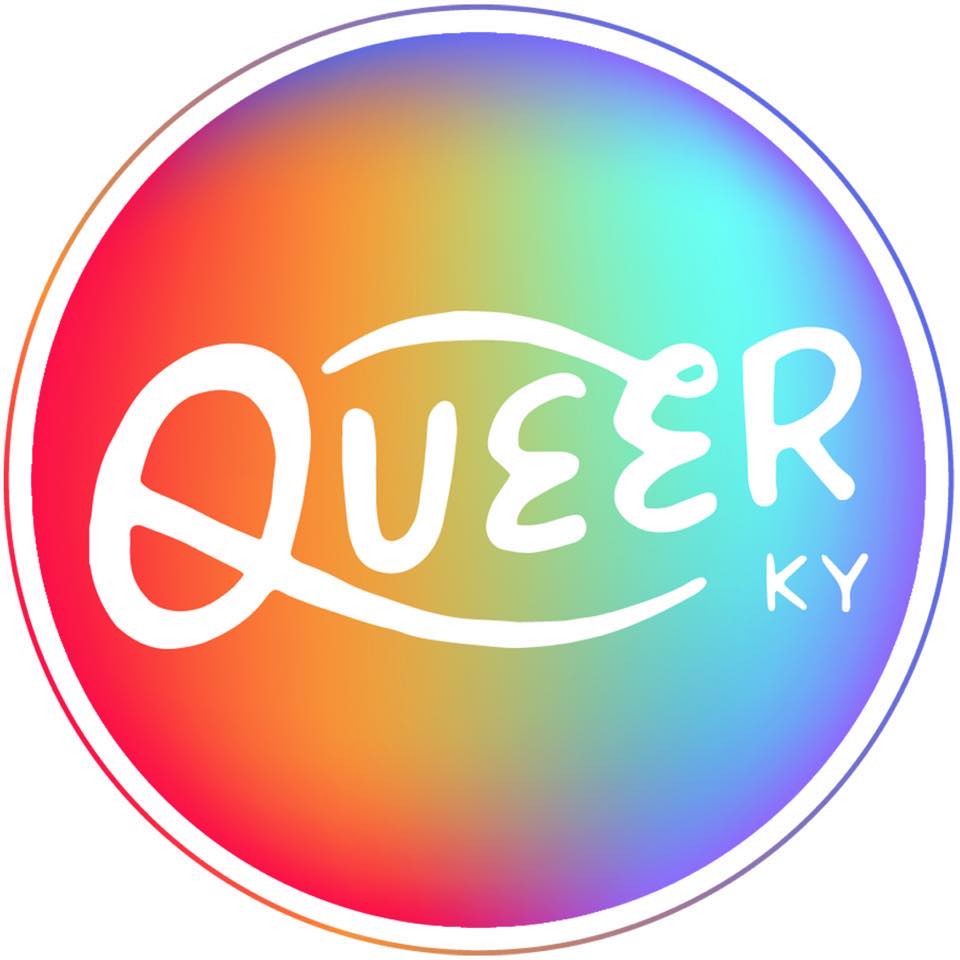

ABOVE: Irene Mudd. Photo courtesy, Spencer Campbell
︎ Irene Mudd, Louisville
SPEAKING: Irene Mudd
Q&A
with Mary Clore
Irene Mudd is a multimedia artist based in Louisville. A recent graduate of the Hite Art Institute and a member of the 2019 class of Hadley Creatives, Mudd is perhaps best known for Guided Hand Tarot, a collage tarot deck she released in 2018. Mudd also works extensively in fiber and painting, exploring themes of feminism, memory, history, and folklore. Mary Clore sat down with Mudd to discuss her experience as a Hadley Creative.
MC: What is it like to be an artist living and working in Louisville?
IM: It definitely feels like there are a lot of opportunities popping up. The art community is still really growing, but it hasn’t quite reached the gatekeeper effect yet, like it gets in New York and other places. It's really easy to meet people and then make connections and collaborations happen. There seems to be more of a demand for artists from the city and local government; people want artists to come and live here and work here. I think it's a pretty accepting community, and because of the cost of living is low, it's an accessible place for artists to live too, which is nice. That's not the case for a lot of up-and-coming cities.
MC: Do you feel like there's anything missing?
IM: I think a lot of art that is popular here is very touristy. There hasn't been a ton of incentive for artists to make challenging contemporary work because what tends to do well—or what smaller galleries want—is the tourist-oriented work. Organizations like Elevator Arts are starting to fill the void of artist networks and giving incentive for artists to make more challenging work to elevate Louisville's art consumption. I would say those things are slowly getting better. They’re on the upswing for sure.
MC: Speaking of things on the upswing, you were a part of the 2019 class of Hadley Creatives. Can you describe the program and what it entails?
IM: I tell people that it's a professional development program for creatives and artists, and essentially what that means is the Community Foundation of Louisville advocates for a group of artists to learn the business side of being an artist. It's an evolving program too, so I think they're open to whatever the participants want to get out of it. They really make a point of asking us at the beginning, “What do you feel you need the most help with?” What my group focused on was marketing yourself—learning how to do elevator pitches and talking to people at openings and galleries. We went over a little bit of grant writing, how to work with nonprofits, and balancing multiple streams of income. I think that one of the biggest things that Hadley does is demystify the financial and business part of art. There’s such a cliché that artists aren't naturally good business people. Frankly, in my experience with art school, that is not prioritized. Professional development is sort of an afterthought, and it doesn't set art students up for being successful. You have to figure it out yourself.
MC: I agree—in art school I felt like no one ever explained how you were supposed to be an artist full time. In the back of my mind, I always assumed I would have to have some kind of day job or just keep going through school.
IM: I think a lot of art schools are still operating under the assumption that their students will graduate and become gallery artists or professors of art, and that's a very narrow scope of possibility. There are so many different ways to be a creative and make a substantial living as a creative.
MC: What motivated you to apply to the Hadley Creatives?
IM: I honestly didn't know too much about it; I just knew that it was about professional development for artists. I was about a year out of art school and I had kind of gone into business for myself with my tarot deck, but I just really felt like I was flying by the seat of my pants. I wanted a structured program that would light a fire under my ass to approach my art practice less lackadaisically. Honestly, Hadley came at the perfect time because I was really in a period of self-doubt about my abilities and the likelihood that I could be successful. At the first retreat, they just hammer home that you are worthy, you are amazing, you are successful, and you will be more successful. It was very empowering, and that's exactly what I needed.
MC: Tell me a little bit about your artistic practice.
IM: My academic background is in fiber art and painting. I got my BFA from UofL in 2017 for both of those mediums. I really refer to myself as a multimedia artists because at any given time, I am trying to work on different series with different media. Since I graduated, I delved a lot more into collage and embroidery work, which I didn't really feel like I could make when I was in school. I'm trying to grow my business, so I’m making work that is at a price point that's more accessible for most people, but that I still enjoy creating. I think that's been a big thing for me—learning to accept that I don't have to be making my most intense thesis-based work to enjoy doing it. I can do smaller things that are just fun for me and then actually be able to sell it to people. I really do believe in everyone being able to access art and have art in their homes.
I also do collage because I really enjoy the spontaneity of it. Pretty much all of my other work is very planned out and researched. I'm more inventive when I do [collage], and I think it changes how my creative mind works. I feel like I'm getting more known for my Tarot deck, which is mixed media, but it's primarily collage. It's kind of funny because I never really identified myself as a collage artist, but at least on the Internet, that's how most people know me.
MC: What are some other projects you’re working on?
IM: My main body of work consists of hand-knitted portraits. It's an ongoing series that I work on continuously. They deal with the erasure of women's stories and identities over time. The portraits are primarily found photographs that I've collected from antique stores or public domain archives. Some of them are photographs from my own family tree or of friends’ families. That body of work was really based on this Alice Walker essay called In Search of Our Mothers' Gardens, which dealt with the theme of her mother—the experience her mother went through being a poor black woman in the south in the fifties, having her cup running over with talents and aspirations, but she wasn't really able to pursue any of them because of her social place in time, except in her garden which was where she flourished. That made me think about my own grandmother who was studying to be a biologist and then had to drop out due to her family. Then she ended up getting married and having five kids, and she died really young, like 53. She just didn't get to pursue anything that she had wanted to, and she was a really intelligent and creative woman. Based on that, I thought about how many generations of women went through that same thing. And I mean, she was a white middle-class woman, so that was a best case scenario. It just made me think about all of this untapped potential and all of these lost—not lost lives, but ghosts of dreams. I wanted to make a series that was a memorial for that, for all those women we'll never know.
I also want to start incorporating photos of women and femmes, not just cisgender women, that have contributed to society in some way that’s been recorded, but you've never heard of them because they're not in the history books. They’re still erased despite there being tangible evidence of what they accomplished. A lot of times, what happens is that their work will be attributed to a man and then you find out later that it was actually this other person. Once I get enough of the knitted portraits together, I'd love to have just like a solo show of just a room filled with them.
MC: Did anything about the Hadley Creatives program surprise you or change your outlook on being an artist?
IM: I was pleasantly surprised at how much they want to hold you accountable for making the changes that you need to make. Another thing that was a pleasant surprise was that how close I got to the other artists. It sounds cheesy, but there was a real family dynamic. I feel like artists are often expected to be in competition with each other, but every time somebody got a show or got an award or something went really well for them, everyone’s immediately like, “Oh my God, congratulations!” It was a really supportive environment of people I probably would not have met otherwise. It connects you with the whole arts scene in Louisville, which is really cool. There are things going on that I had no idea about until I met the other people in the program that were different disciplines than me.
MC: A lot of times I picture the art community here as a bunch of little islands and some of them might be clustered together, but other ones are further apart. Anytime there's a chance to bridge some of those areas, I find it really exciting.
IM: It’s definitely something we tried to do with our final event—creating more room for collaboration between those islands. It makes the city so much smaller in a good way.
MC: What are some specific things that readers can do to support artists in their community?
IM: Definitely try to shop at stores that are local, that sell work of local artists. Also, engage with museums about what you want to see. Go to galleries, talk to artists and gallery owners, go to art markets—there are a lot of art markets in the city. If you have the means to donate to art organizations, that's tremendously important, especially for newer organizations that are trying to advocate for artists. It’s important that there are not just one or two main arts funding organizations in the city so that a variety of types of artists get represented and get grants. I feel like now more than ever, I'm seeing a lot more opportunities for artists come up through the city and through new organizations. That makes me not only feel supported, but it makes me feel like the other artists in our community are being supported as well. It's kind of the opposite of a gatekeeper effect. Rather than keeping the resources secret, it's like, “No, let's share them. Let's make them known to people.”
-
Applications for the 2020 Class of Hadley Creatives open July 1. More information at the Community Foundation’s website: https://www.cflouisville.org/
More information about Irene Mudd’s work on her website: http://irenemuddart.com/
Mary Clore
Development & Outreach Editor, Contributor
6.26.19

Temperence, from Guided Hand Tarot
 The Chariot, from Guided Hand Tarot
The Chariot, from Guided Hand Tarot The Lovers, from Guided Hand Tarot
The Lovers, from Guided Hand TarotUntitled (2017). Hand-knitted cloth







